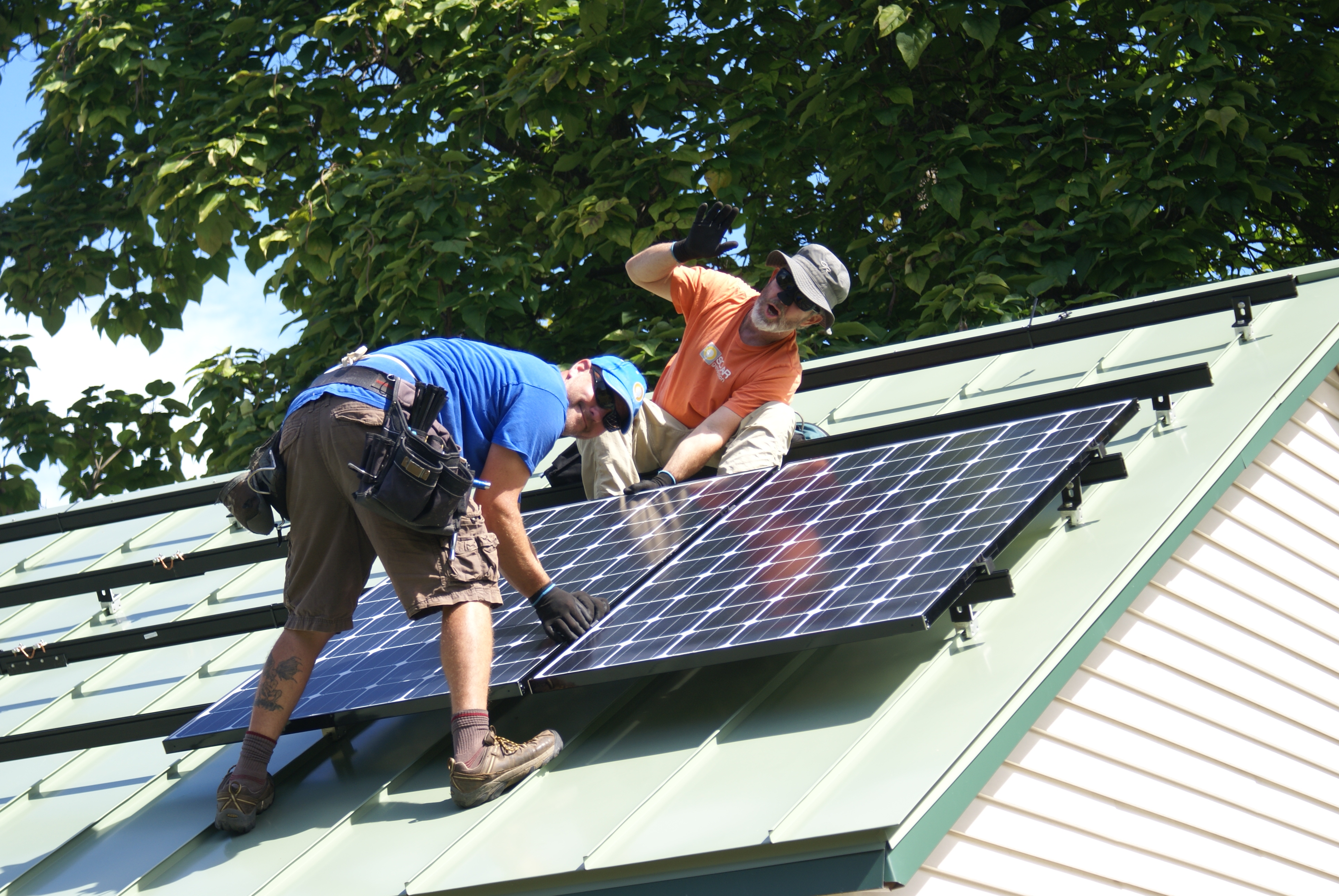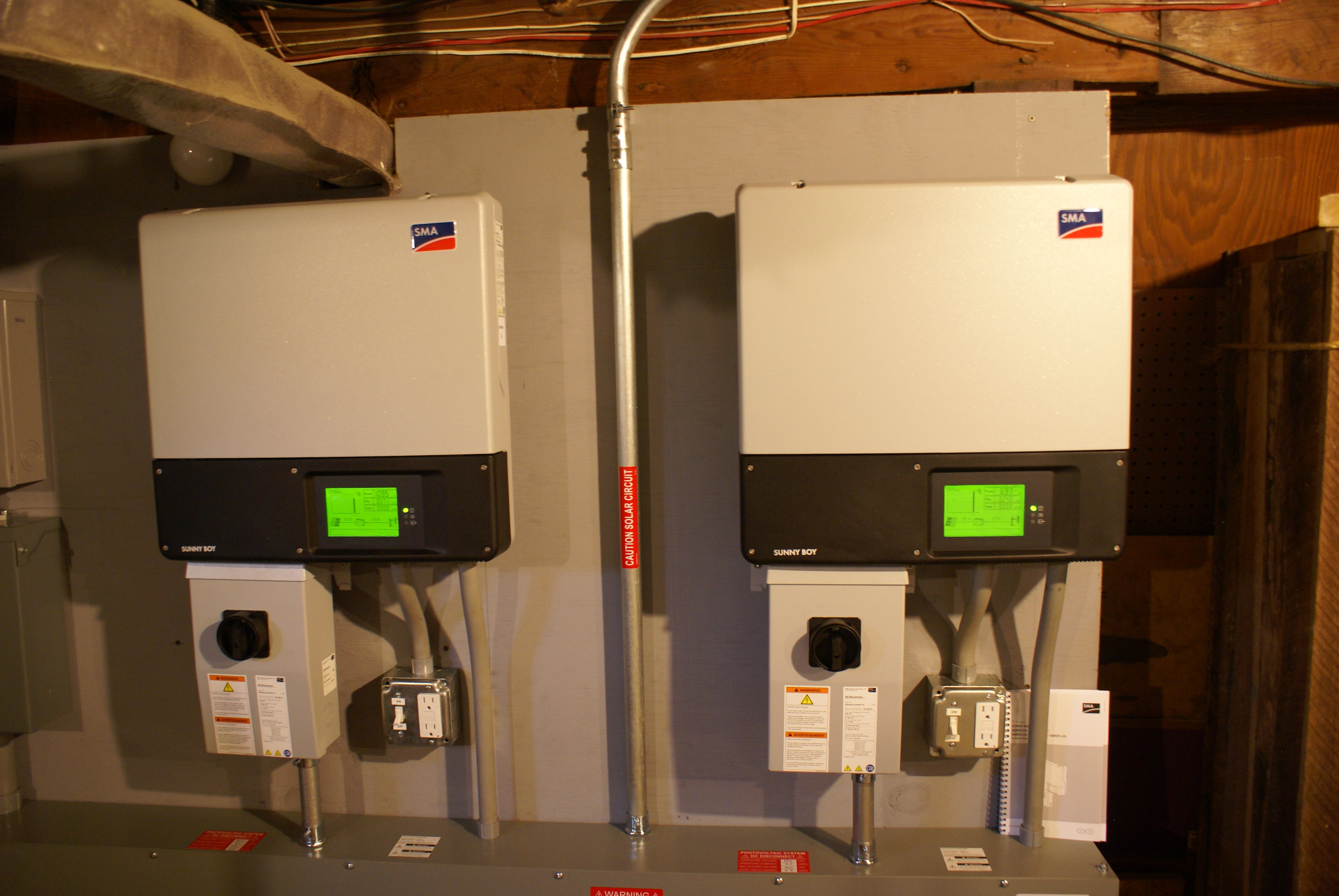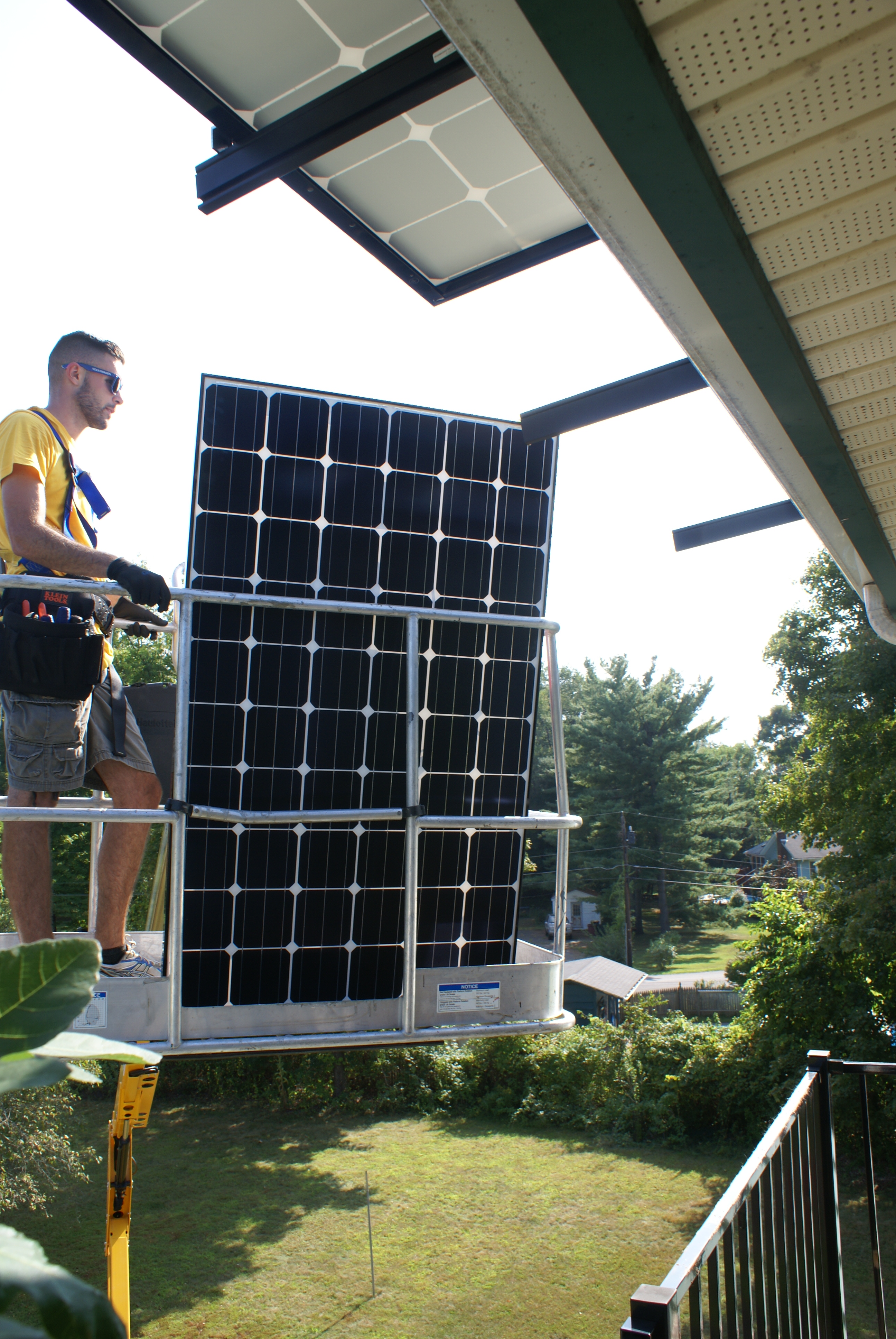Invest In What You Know
“Invest in what you know” is an old stock market adage. The idea is that, if you have some personal knowledge of the real economy, you can use that to make better investments.
How useful this adage is depends on how you apply it. If you know more about a stock market sector than other investors because of “what you know,” it’s possible to make better investments because you may be better at spotting future trends. If, on the other hand, you feel you know a sector because you buy its products, you may get caught up in a herd mentality and end up buying a company (along with a bunch of its other customers) just when the popularity of its products peaks along with its stock price.
I’m a recent customer of the solar industry. Last week, my solar installer flipped the switch on my new solar PV system, and my meter started spinning backwards. Like many new solar owners, I’m a bit obsessed the system. Here, I’m channeling that obsession into an article about the companies that supplied parts of the system, and what we can learn about their prospects.
The System
Solar systems are far from uniform, and vary significantly depending on energy usage, location, available space, and local incentives. My system is a little larger than average, at 6.6kW. I have a fairly high load because last year I installed air source heat pumps to supplement my oil-fired boiler. My 2 person, 2000 square foot house in New York’s Hudson River Valley uses an average of 13 kWh a day outside the heating season, but and another 10-20 kWh a day during the four month heating season, for an average annual usage of 21 kWh/day.
According to my calculations using PVWatts, my 6.6kW system should produce just about that much in an average year, but my solar installer used more conservative numbers, and expects it to produce about 20kWh a day. Below is a monthly production and usage chart based on my calculations.
Because my usage is highest in the winter, and my production is highest in the summer, I will be relying on net metering rules to “bank” kWh produced from April to October to be used for heating from November to March. My utility requires that this kWh bank be trued up once a year, which I will set in March or April. I’ve shown the true-up here in March, where I’m “billed for” negative kWh (i.e. paid by the utility.)
This “banking” is actually to the utility’s advantage because, not only do they effectively get an interest-free loan of electricity for an average of 6 months, but New York electricity prices tend to be a little higher in the summer than in winter. Since 2005, only 2014 had a higher peak winter price than the previous summer peak. Last year’s exceptionally high winter prices were caused by locally high natural gas prices, in turn fueled by the polar vortex. The utility also benefits from daily production swings: solar production is highest when hourly prices are highest in New York.
Although the utility receives significant benefits from my solar system, it is also a good deal for me, mostly due to Federal and State incentives. If I assume electricity price increases completely offset system maintenance costs (I expect them to more than pay for any maintenance), my expected internal rate of return over 30 years will be 9.7% (or 8.3% over 20 years.) The payback of my initial investment will take about 9 years. Without subsidies, the 30 year return would have been a paltry 1.9%, with a 22 year payback.
I expect that many New York solar systems have even better returns than mine, because I made a number of decisions which raised cost without increasing electric production. First, I wanted to reserve part of my roof for a future solar hot water system, so I chose somewhat more expensive monocrystalline panels in order to make the most of the roof space I was willing to use. Second, I decided to go with SMA TL-US strong inverters rather than microinverters because TL-US inverters can provide some back-up power when the grid goes down. Third, I had to do some upgrades to the frame of my garage and attic of my old (1930) house to support the extra weight of the panels. Finally, I wanted an awning to protect a third floor balcony from rain, and so I had my installer project the edge of the panels past the edge of the roof to serve this function, making the installation more difficult.
The Stocks
I don’t follow any of these stocks closely, so I decided to ask my panel of professional green money managers.
SMA Solar Technology (S92.DE, SMTGF)
My inverters were from SMA Solar Technology AG (S92.DE, SMTGF), a Sunny Boy 3000TL-US-22 and a Sunny Boy 3800TL-US-22. These cost about $0.50/W and account for about 13% of the total system cost.
There was some real disagreement about SMA. Shawn Kravetz manages a solar focused hedge fund at Esplanade Capital LLC in Boston, so I pay attention to his thoughts on solar related stocks. He notes that SMA Solar Technology’s string inverters have been losing market share to suppliers of micro-inverters and optimizers.
These competing technologies make better use of the power produced when power production from panels is not uniform, such as when the panels are partially shaded. Fortunately for me, I have very little shading, and living in a rural area, I wanted to be prepared for long-term power outages. To the right, you will see an image of me testing the inverter’s ability to power my furnace on a cloudy day (it was raining at the time.) The furnace draws 340W, which is about 8% of the rated capacity of the larger of my two solar arrays. I expect that I should have enough power to run the furnace for an hour or two even on cloudy winter days, as long as I keep them clear of snow.
Frank Morris, the former portfolio manager of the Global Ecological mutual fund (EPENX) describes the technology as a dramatic innovation:
With the flip of the switch, SMA’s TL-US inverter will send up to 15A of 110V power to your home outlet even during a power outage. This feature is unique to the SMA TL-US line of inverters.
When there is a power outage, a s
olar roof with SMA TL-US line of inverters can provide electricity to your home, independent of the grid. During hurricane Sandy, millions lost electricity-and the thousands of solar roofs in Sandy’s wake were useless: most inverters lose function when the grid is down. The SMA TL-US line of inverters represent a dramatic innovation for the world solar market. The convergence of resilient distributed affordable solar electricity generation, affordable electricity storage, and breakthroughs like the SMA TL-US line of inverters, should have a dramatic effect on the global utility industry.
Thomas Moser, CFP® of High Impact Investments® in Tucson, Arizona likes SMA most of the companies listed from a buying viewpoint, also because of its applications to backup power. He says, “Energy storage will be needed as individuals and companies look to disconnect from utilities. The level of concern regarding energy backup systems in case of total utility shutdown will rise, especially with worldwide threats capable of shutting down the grid. SMA’s R&D is well ahead of the curve on energy storage.” That said, he sees many more attractive clean energy buying opportunities right now, and says SMA’s stock price would need to decline from the current €22 and change to around €15 before he’d buy it.
My panels are 22 LG 300W Mono X® NeON Modules. These are fairly high-end modules using 60 monocrystalline silicon cells with a total module efficiency of 18.3%. The panels can be bought retail for approximately $1.50/W, and account for approximately 40% of the total system cost. LG Electronics is a listed Korean conglomerate with symbol 066570 on the Korea SE.
LG is a large conglomerate. My experts did not feel that its solar segment was a large enough part of its overall business to make an investment case. That’s not to say they don’t know anything about the company: Kravetz knew mine were from LG’s MonoX® line just from of the power rating.
 Schneider Electric SE (SU.F, SBGSF)
Schneider Electric SE (SU.F, SBGSF)
Schneider Electric SE (SU.F,SBGSF.) supplied five Square D brand Solar DC disconnects and a circuit breaker box for combining the current from the two inverters. I’m guessing these amount to between 10¢ and 30¢ per Watt, or about 5% of the total system cost.
Schneider makes a number of clean energy related products, but the experts I consulted were not familiar with the company or did not think clean energy is a significant enough part of its business to make an investment case.
ABB Group Ltd. (ABB)
My installer included an analogue “dumb” meter from ABB Group (ABB) to keep track of total system output (the SMA inverters each keep track of their own energy production.) The system also required 200 to 300 feet of conduit and electrical boxes from Carlon, a brand owned by ABB. These components likely cost between 10¢ and 15¢ per Watt, or about 3% of the total system cost.
Although ABB is another conglomerate, it has enough cleantech to get the attention of my panel. Jan Schalkwijk, CFA® of JPS Global Investments in Portland, OR says,
ABB touches on renewables and energy efficiency in various ways, with offerings such as solar inverters, HVDC [high voltage direct current] links that connect renewables power sources to the grid (ABB has installed 13 of the 14 HVDC projects commissioned worldwide to date), offshore wind power projects, and high efficiency motors, among other power products. In the most recent quarter, orders were up 13% year-over-year, half of which came from a HVDC ink project in Canada to connect renewable power sources to the North American grid. Another large project in progress is the 900MW DolWin2 offshore wind converter platform that will be installed in the German North Sea. Recently the company has faced industry headwinds related to offshore wind in Europe, unprofitable EPC projects [engineering, procurement, & construction, i.e. projects for which ABB was primarily responsible for construction] for solar (which it is discontinuing), and contracts that did not have equitable risk sharing with partners. The company is aware of these issues and is changing its strategy to de-risk and improve profitability of the Power Systems business. With a dividend yield of 3.6% vs 3% for the peer group, a strong competitive position, and a relative valuation 5-10% below peers (averaging relative P/E, EV/EBITDA, P/B, EV/Sales, P/CF) ABB looks like a decent bet. Risks include unfavorable currency movements (Swiss Franc), further trouble in offshore wind, and failure to deliver on strategic refocus of the Power Systems business.
Jim Hansen at Ravenna Capital Management in Seattle, Washington also owns ABB, and “will be buying again if the price drops.” Moser is more skeptical, and comments that its recently announced $4 billion stock buyback looks like “putting a fresh coat of paint on an old truck.”
Although not directly involved in the project, my utility replaced my meter with a new I-210+c SmartMeter from Itron, Inc. (ITRI) to support net metering. I don’t know what this cost the utility, but it was probably not significant as a percentage of system cost, likely only a few pennies per watt.
Itron makes a full range of electric meters, and was more popular with clean energy investors when residential smart grid was a greater focus of attention than it is today. Hansen has owned it in the past, but does not currently. Moser says the stock does not interest him because its stock performance is “as lumpy as its sales.”
Installer, Balance of System
The remaining approximately 40% or $1.60/W of the system cost was overhead, labor, equipment rental, permitting, and components such as racking (Unirac). wiring, and flashings (QuickMount) which are made by privately held companies. My installer is a local privately held company, Solar Generation.
Conclusion
If you have a strong opinion about the advantages of microinverters vs. string inverters, or think that t
he growing interest in grid resilience may allow SMA to reverse some of its recent losses, there will likely be stock market profits to be made by betting on one of these trends, but I don’t have the confidence to put my own money on one or the other. While my own strong preference is the added resilience, companies selling solar leases or power purchase agreements are only paid for producing energy, not for the resilience SMA’s products bring. But the recent trend away from leases and towards other forms of solar financing may allow more homeowners to opt for resilience over maximizing production, as I did.
Of the others, only ABB is in my own portfolio, as it has been for years. Like Schalkwijk, I like the valuation, dividend stream and solid position in many aspects of the electric grid.
Even ABB’s dividend stream does not come close to matching the income stream (in the form of lower electricity bills) of my solar system itself. Sometimes an industry’s products are far better investments than the industry itself. For me, the lesson of this whole exercise is that companies which invest in solar installations are likely to be better investments than the companies that provide the parts.
Disclosure: Long ABB.
DISCLAIMER: Past performance is not a guarantee or a reliable indicator of future results. This article contains the current opinions of the author and such opinions are subject to change without notice. This article has been distributed for informational purposes only. Forecasts, estimates, and certain information contained herein should not be considered as investment advice or a recommendation of any particular security, strategy or investment product. Information contained herein has been obtained from sources believed to be reliable, but not guaranteed.












